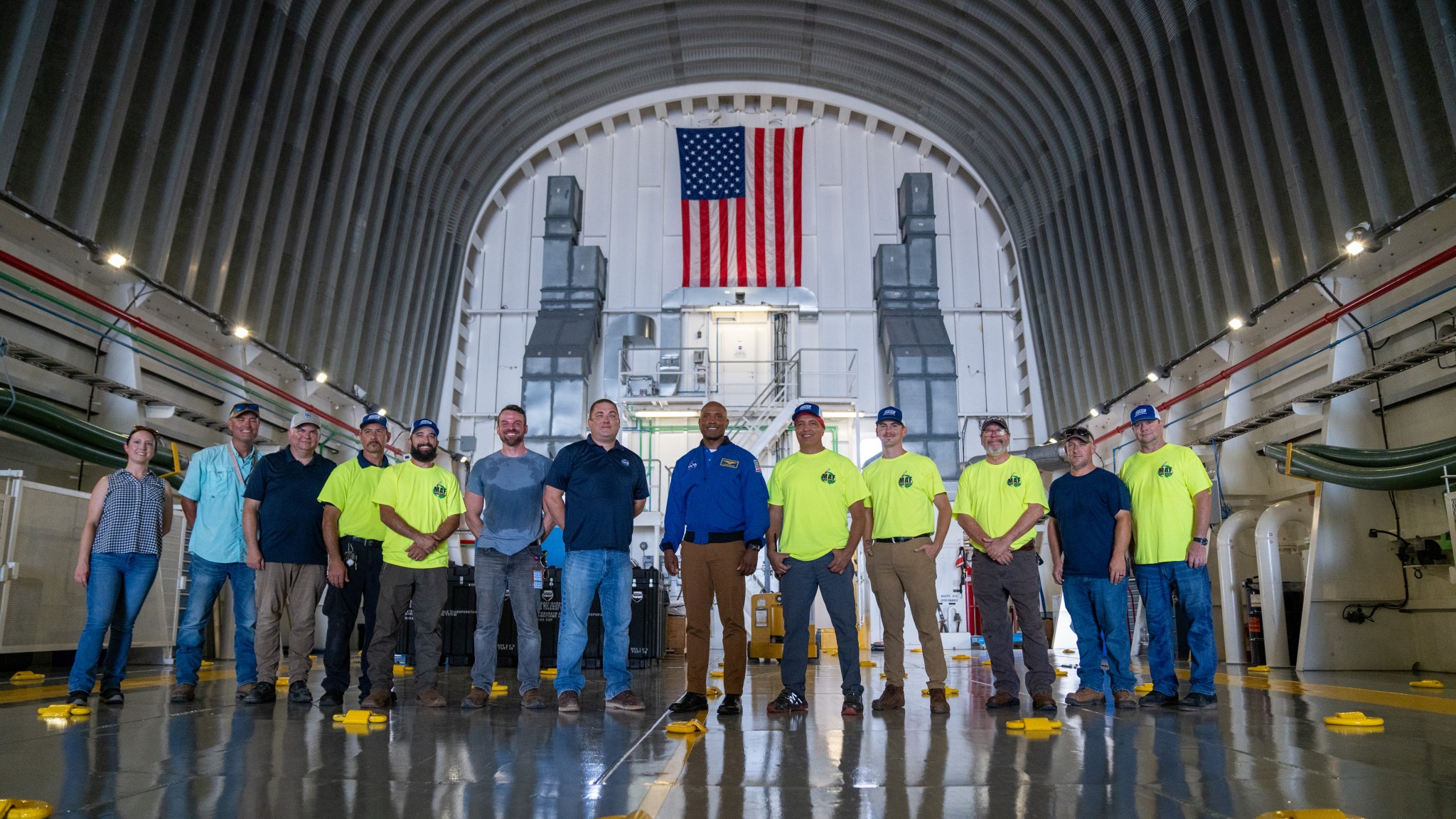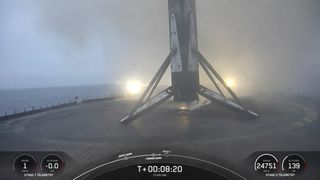Members of the Artemis II crew met with the crew of NASA’s Pegasus barge prior to their departure to deliver the core stage of NASA’s SLS (Space Launch System) rocket to the Space Coast. NASA astronaut and pilot of the Artemis II mission Victor Glover met the crew July 15. From left to right: Ashley Marlar, Jamie Crews, Nick Owen, Jeffery Whitehead, Scott Ledet, Jason Dickerson, John Campbell, NASA astronaut Victor Glover, Farid Sayah, Kelton Hutchinson, Terry Fitzgerald, Bryan Jones, and Joe Robinson. NASA/Brandon Hancock NASA astronaut Reid Wiseman, commander,…
Read MoreDay: July 18, 2024
NASA wants fresh ideas for recycling garbage on the moon
With crewed Artemis launches on the horizon, NASA is searching for sustainable solutions for waste management during long-term missions on the moon. An initiative called LunaRecycle, under the space agency’s Centennial Challenges Program, aims to incentivize the design and development of recycling solutions for use on the surface of the moon and/or inside pressurized lunar habitats. The program aims to reduce solid waste streams during long duration lunar missions under the Artemis Program, as well as to improve the sustainability of future space exploration. “As NASA prepares for future human…
Read MoreLoneliness is a dish best served in space: Why food may taste weird to astronauts
Studying common food aromas may help scientists better understand why meals reportedly taste bland in space, leading to astronauts’ decreased nutritional intake. Researchers from the Royal Melbourne Institute of Technology (RMIT) in Australia have found that spatial perception can play a significant role in how people smell various aromas, which, in turn, impacts their flavor. As it turns out, a greater sense of loneliness and isolation — which astronauts may experience while on the International Space Station (ISS) — can influence how people smell and taste their food, according to…
Read MoreNew Evidence Adds to Findings Hinting at Network of Caves on Moon
These images from NASA’s LRO spacecraft show a collection of pits detected on the Moon. Each image covers an area about 728 feet wide. An international team of scientists using data from NASA’s LRO (Lunar Reconnaissance Orbiter) has discovered evidence of caves beneath the Moon’s surface. In re-analyzing radar data collected by LRO’s Mini-RF (Miniature Radio-Frequency) instrument in 2010, the team found evidence of a cave extending more than 200 feet from the base of a pit. The pit is located 230 miles northeast of the first human landing site on…
Read MoreThe Earth Observer Editor’s Corner: Summer 2024
Earth Observer Earth Home Earth Observer Home Editor’s Corner Feature Articles Meeting Summaries News Science in the News Calendars In Memoriam More Archives 8 min read The Earth Observer Editor’s Corner: Summer 2024 Welcome to a new era for The Earth Observer newsletter! This communication marks the official public release of our new website. While this release moves us into a new online future, the newsletter team has worked to ensure the new website also allows for continuity with our publication’s robust 35-year history. The Executive Editor has written a more detailed overview of…
Read MoreSpaceX launches to ISS are under independent NASA review after rare Falcon 9 rocket failure
NASA will perform its own re-authorization of SpaceX’s Falcon 9 before the rocket launches its next astronaut crew or cargo mission, the agency confirmed Wednesday (July 17). Falcon 9 experienced a rare failure during an engine burn of SpaceX rocket’s second stage, due to an oxygen leak, during a launch on Thursday (July 11). A mandatory mishap investigation is ongoing. SpaceX, however, asked the Federal Aviation Administration Monday (July 15) to allow for future launches under a “public safety determination”, meaning the launch posed no risk to public safety. On…
Read MoreThe Earth Observer’s 35th Anniversary
Earth Observer Earth Home Earth Observer Home Editor’s Corner Feature Articles Meeting Summaries News Science in the News Calendars In Memoriam More Archives 3 min read The Earth Observer’s 35th Anniversary Welcome to a new era for The Earth Observer newsletter! Our 35th anniversary also marks the official public release of our new website. Over the past year and a half, The Earth Observer has migrated from a print publication (the last printed issue was November–December 2022) to publishing PDFs online only (final PDF issue published in May 2024) to publishing individual articles on our new site.…
Read MoreArtemis II Core Stage on the Move
On July 16, 2024, the Artemis II core stage rolled out of the Vertical Assembly Building to the waiting Pegasus barge at NASA’s Michoud Assembly Facility in New Orleans in preparation for delivery to Kennedy Space Center.
Read MoreRegistration Opens for the 2024 NASA International Space Apps Challenge
Earth (ESD) Earth Home Explore Climate Change Science in Action Multimedia Data For Researchers NASA invites a global community of innovators, technologists, storytellers, and problem solvers to register for the 2024 NASA Space Apps Challenge, the largest annual global hackathon. The annual event, held this year on October 5-6, fosters innovation through international collaboration by providing an opportunity for participants to utilize NASA’s free and open data and space-based data from space agency partners. “It takes a variety of skills and perspectives to launch a mission into space, and NASA’s…
Read More






